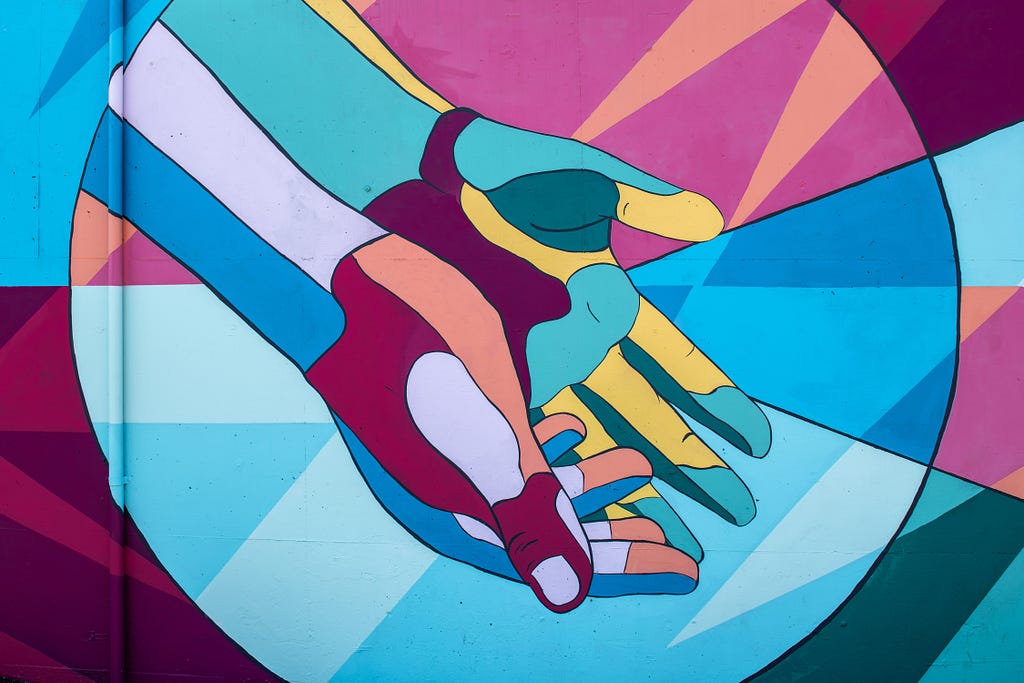How agencies can adopt an open source strategy to make their services more usable by people of all abilities
 Photo by Tim
Mossholder
on Unsplash
Photo by Tim
Mossholder
on Unsplash
Government agencies, of all organizations, have perhaps the greatest obligation to plan for the accessibility of their websites and digital services. Beyond meeting compliance requirements for accessibility, mission-focused agencies want to make sure the greatest number of people — regardless of ability — can use and understand the important content and services provided online.
There's a tendency to think only of permanently "disabled" people when we talk about accessibility, but it's an issue that extends to a large portion of the population. Temporary and situational disabilities can affect all of us from time-to time — as we find ourselves with an injured hand or out on a sunny day trying to read our phones. And of course, some of the people that most need government services may also face some of the greatest barriers in accessing digital content — such as English Language Learner immigrants, low-income families with limited access to Internet devices, the aging population receiving Medicare, or Veterans struggling with mental health challenges.
Meeting the needs of people with varying abilities and backgrounds is a multi- layered issue requiring conscious decisions around technology and process in order to get it right. This means government digital platforms should be built with accessibility in mind, using modern tools and practices that will constantly improve instead of falling out of date.
Meeting the needs of people with varying abilities and backgrounds is a multi-layered issue requiring conscious decisions around technology and process.
CivicActions has long been a proponent of open source technologies and agile practices, which provide many benefits to government agencies, including an accessibility advantage. Here are four recommendations for an open source strategy that will set agencies up for success in the goal of providing modern and accessible digital services.
Use tools that are ready-made for accessibility
It only makes sense to start on the right foot by using tools that have already been tested for accessibility — otherwise you are beginning with a lot of technical debt. Your team will be responsible for finding and fixing all the errors, and continually monitoring anything that's built to make sure the systems continue to be functional for groups that depend on you for accessibility (e.g., people who use assistive technologies like screen readers).
Open source platforms such as Drupal (for website content management) and the U.S. Web Design Standards (USWDS) (for designing government websites) are already evaluated against the newly updated Section 508 requirements and have been extensively tested against the World Wide Web Consortium's (W3C) Web Content Accessibility Guidelines 2.0 AA. The combination of these tools for government websites provides an accessibility boost from the get-go. Accessibility is a complicated issue, so using platforms that are continually maintained by the open source community is smarter than trying to apply "quick fixes" to problems as they are discovered — which can put your organization at risk.
Open source platforms like Drupal and USWDS are built to meet accessibility standards as they evolve.
CivicActions engineers and designers have been working on the pairing of Drupal and USWDS since the design standards were initially released, knowing these open source tools would be a powerful combination for agencies looking to bring their systems up to date. From presenting about the benefits of this pairing when building government sites, to co-maintaining a USWDS base theme in Drupal, we're committed to helping agencies make the most of these platforms in their modernization efforts.
Choose an agile approach
Whether you're modernizing a legacy system, building something new, or improving current operations, an agile approach is best for keeping accessibility at the forefront. This is our go-to process for any work with government clients, because the iterative cycles allow barriers to be identified and resolved early in the process — saving time and money in the end. Agile also pairs well with an open source strategy, because open source tools evolve constantly as improvements are made by people who are using them.
With all team members working in an agile manner:
- Designers can quickly identify potential accessibility problems in their prototypes
- Content authors can check for readability (and compatibility with assistive technology)
- Developers can use automated accessibility tools to catch issues before code is committed to the repository
And this can all happen before clients even see prototypes, let alone before huge systems are put in place that would be time-consuming and expensive to fix if accessibility issues were uncovered later. Our years of experience with open source tools (especially Drupal) have shown that agile allows for comprehensive testing at every stage of a project in addition to the opportunity to benefit from work that others have done — which improves the overall accessibility, security, and usability of technology systems.
Plan for the future
The web is evolving quickly. Browsers, standards, and use-cases change over time. And agencies will increasingly see people accessing their websites and services through new technologies that depend on semantic content in order to work well — which adds plenty of layers to the accessibility challenge.
For example, Google search results glean information about organizations from structured site content. The use of assistant technologies like Siri, Alexa, and Google Home will make voice recognition a growing interface to consider from an accessibility perspective. And Virtual / Augmented Reality will continue to grow in popularity, meaning that government sites will need to be accessible not just through home browsers, but through mobile devices, car dashboards, home speakers, and other AI.
All this means that no "accessibility checklist" will ensure your site meets its accessibility requirements next year, or in five years. So it's important to view accessibility as a journey, not a destination. Agencies should plan for the future by establishing a strong foundation that will allow them to evolve their accessibility efforts for years to come — without having to scrap old technologies and start over!
Accessibility is a journey, not a destination.
One way to do this is through open source tools like Drupal and USWDS, which are constantly improved as maintainers and organizations contribute updates and fixes. As technology evolves, these tools keep up, making it easier to maintain accessibility over time. That's part of the reason Drupal is trusted by leading disability organizations like the National Federation of the Blind. For government, as well, Drupal provides a platform for managing web content that is built for accessibility and will continue to evolve along with the online behavior of constituents.
Be part of the community
Community contributions are the driving force that make open source tools so adaptable. Unlike proprietary software that is owned and maintained by one entity, open source tools are owned by everyone and can be improved by anyone. More government organizations are adopting this open approach to technology as a way to share helpful code with other agencies and the public — while also gaining a community of support upstream as open source software libraries are continually updated. Particularly with Drupal and USWDS, which are heavily used by government, accessibility improvements are made whenever barriers to users are identified. This makes it easier for all agencies using these tools to implement accessibility best practices for their web content.
Open source tools like Drupal and USWDS make it easier for agencies to implement accessibility best practices.
CivicActions has cultivated and contributed to open source communities for over a decade. Their teams are actively using and improving Drupal and the U.S. Web Design System, working with agencies to make government services more accessible to everyone. Being part of these communities allows developers and designers to stay familiar with issue queues, create and test patches, and learn from others who are using the same systems in different ways — so we can all shape these tools to be as functional, flexible, and useful as possible.
As governments seek to make accessibility a priority in today's digital world, it makes sense to start with tools that are purpose-built to evolve along with technology systems and to be part of communities that care deeply about meeting the needs of all users. Open source tools like Drupal and the U.S. Web Design System can help you stay compliant with accessibility regulations, but also to lay a strong foundation for a future in which people of all abilities can more easily benefit from the services you provide.
CivicActions delights in helping agencies adapt these tools to better fulfill their missions. Get in touch to talk about making government services more accessible with a forward- thinking open source strategy.
4 ways to improve government accessibility through open source was originally published in CivicActions on Medium, where people are continuing the conversation by highlighting and responding to this story.

